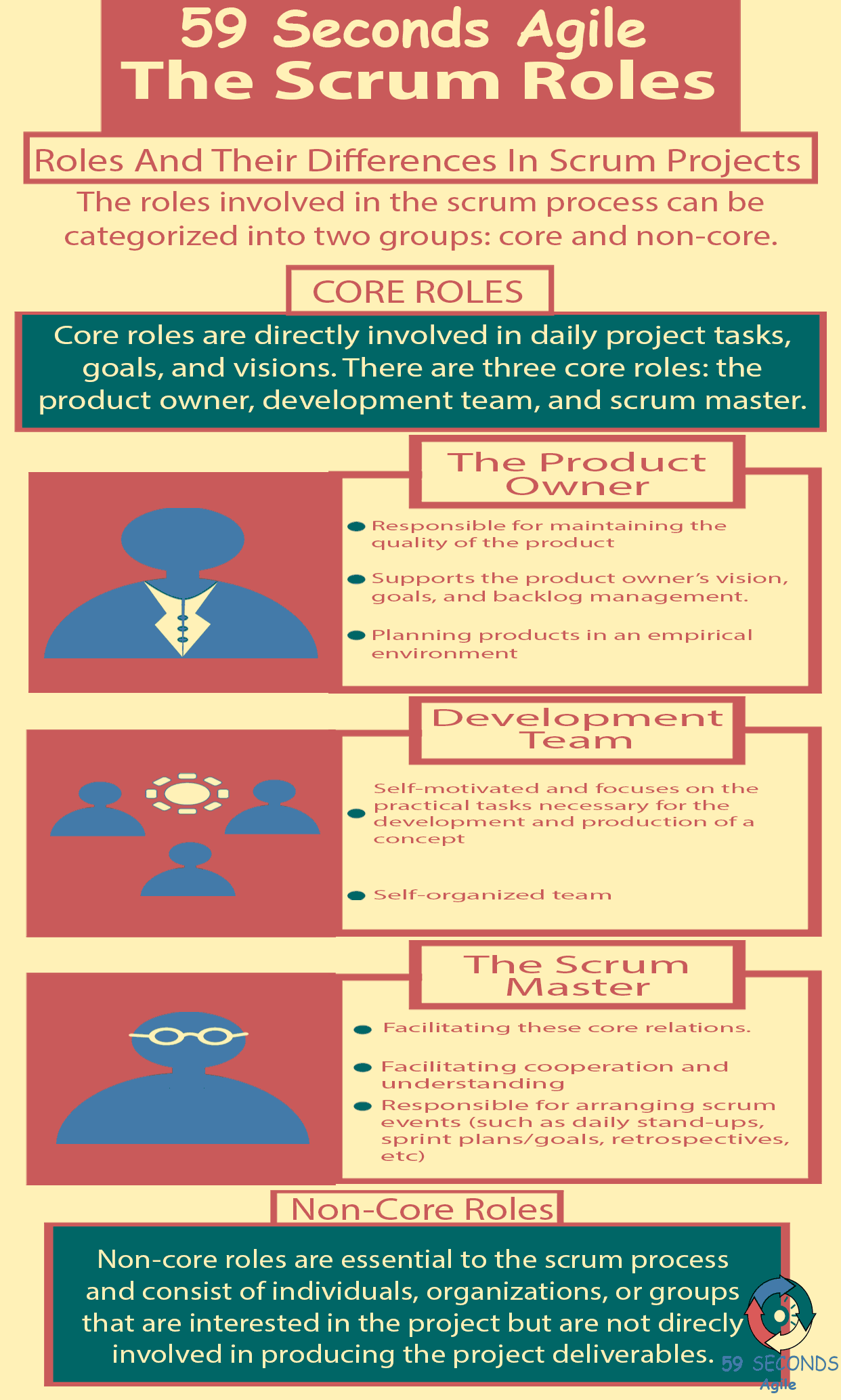
The Scrum Roles for Scrum Masters – Part 2
Non-Core Roles
Non-core roles are also essential to the scrum process and consist of individuals, organizations, or groups that are interested in the project but are not involved in the daily sprints, ceremonies, or every day scrum processes. This includes, but is not limited to, vendors, suppliers, implementation managers, customers, external departments, users, and sponsors. These external stakeholders typically do not contribute to the development of the product or scrum team, but likely use, benefit from or financially support the project. The non-core roles will depend on what is necessary for a project and situation.

Therefore, the Scrum Master’s role in managing non-core roles is two-fold. First, they are responsible for bringing in external stakeholders when necessary and managing expectations, communication, and understanding among these diverse members. Secondly, they are responsible for protecting the Scrum team from uninformed, potentially harmful, or unnecessary opinions and decisions imposed by non-core stakeholders.
Our Favourite Agile Books
We found these books great for finding out more information on Agile Scrum:
External stakeholders may create disturbances for a number of reasons: “ignorance, weak enforcement, failed support, habit, lack of faith, contention for control, or legitimate input”. Thus, a number of suggested solutions for a Scrum Master addressing these difficulties include: “be consistent, conduct training, have a contract, use the retrospective pro-actively, bring stakeholders to the Scrum,” and protect your team as a guard dog protects his post. Balancing between bringing external stakeholders and setting rules for levels of involvement should be of the utmost importance to the Scrum Master.

